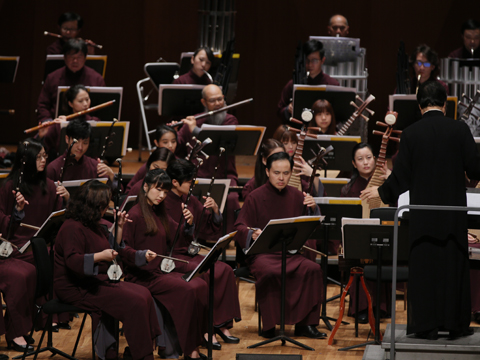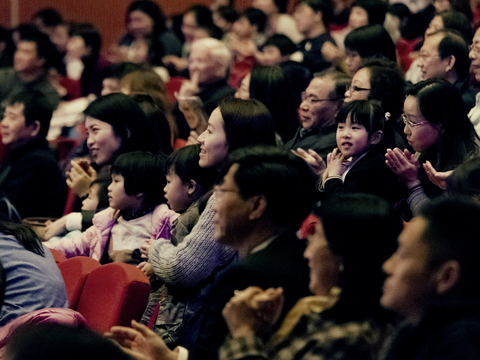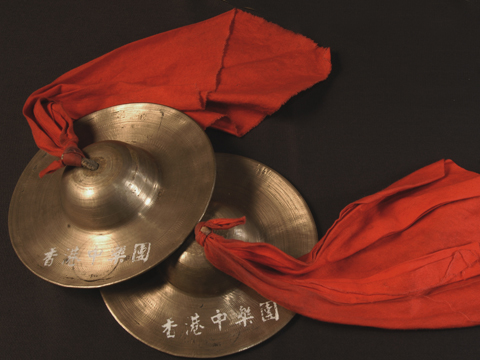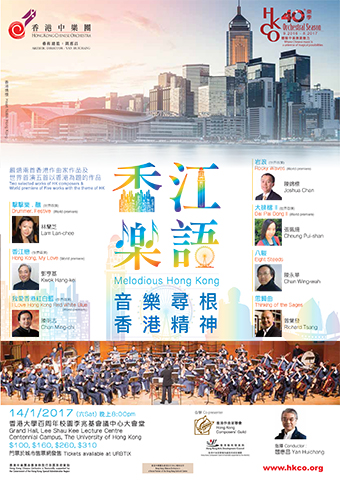

HKCO
Hong Kong Chinese Orchestra Environmental, Social and Governance Artistic Director and Principal Conductor for Life Orchestra Members Council Advisors & Artistic Advisors Council Members Management Team Vacancy Contact Us (Tel: 3185 1600)


Concerts


Education
The HKCO Orchestral Academy Hong Kong Youth Zheng Ensemble Hong Kong Young Chinese Orchestra Music Courses Chinese Music Conducting 賽馬會中國音樂教育及推廣計劃 Chinese Music Talent Training Scheme HKJC Chinese Music 360 The International Drum Graded Exam


Instrument R&D
Eco-Huqins Chinese Instruments Standard Orchestra Instrument Range Chart and Page Format of the Full Score Configuration of the Orchestra
40th Orchestral Season
Melodious Hong Kong
8:00 pm
Centennial Campus, The University of Hong Kong
Digging up musical roots and reaffirming the Hong Kong ethos
Hong Kong has more than cosmopolitan charm and a glamorous cityscape to offer. There is the retro side that appeals to those who hold ‘Old Hong Kong’ dear at heart. With that purpose, we are joining hands with the Hong Kong Composers’ Guild to pick out some of the most memorable works by local composers Chan Wing-wah and Richard Tsang. Joshua Chan, Chan Ming-chi, Kwok Hang-kei, Cheung Pui-shan, and Lam Lan-chee will present their new works on Hong Kong themes. The concert will be a wonderful cinematic experience interpreted through music, as snippets of life in the old days and now, the East-West influence that contribute to Hong Kong’s character, etc. are conjured up by the orchestra. True to our credo “radiating from Hong Kong and empowering Chinese music in the world”, we will show the diverse facets of our city to the world with music ‘made in Hong Kong’.Rocky Waves Joshua Chan
Eight Steeds Chan Wing-wah
Thinking of the Sages Richard Tsang
Reading the ‘Programme’ in Programme Music
Chow Fan FuThe concert ‘Melodious Hong Kong’, which carries the theme of “digging up musical roots and reaffirming the Hong Kong ethos”, features five world premiere compositions, with each composer giving a ‘programme’ narrative for his/her work. So they are typically ‘programme music’ with an extra-musical narrative, but there are three ways that distinguish them from the traditional genre:
1. The ‘programme’ in each is distinct, unequivocal and concrete, and the contents focus on
Hong Kong. There is absolutely nothing vague or abstract in those regards. Even
in the case of the comparatively more abstract Thinking of the Sages by Richard Tsang, its musical narrative is actually quite obvious.
2. The composers have all provided programme notes that are explicit and easy to understand.
3. The composers were either born or raised in Hong Kong, or have lived here for a long time. What is more, they are all living today.
These three points may well be seen as the common attributes shared by the pieces chosen for this concert. The first two serve as an effective guide to appreciating the music, and help the audience stay on course, even for the first-time listener. The third is an example of individuality embedded in commonality. The composers all share a sense of belonging and love for Hong Kong. Yet they each have their own way of infusing and conveying that feeling in their music. These nuances may be traced back to the family or environment in which they grew up, the education they received, and the social circles they move in, regardless of whether Hong Kong is their native or adopted place of abode.
At the same time, it is worth noting that any ‘ambitious’ composer should see the pursuit of innovative creativity as his ‘divine duty’. So, despite ‘programmes’ that are specific and unambiguous, and programme notes that are clear and detailed, such superficialities that are more readily communicated through images, text and speech will not entirely satisfy the ambitious composer. To enjoy this concert, the listener is advised to make every attempt to transcend the obvious, and access the deeper layers of each piece of music. Only then can the inner feelings and meanings its composer intends to express be better perceived. In other words, the composers have adopted different principles, techniques and means of expression to impart, by way of the obvious, the more profound emotions, ideas, even unique messages in the music they each created.
Although the majority of those attending the concert will be coming into the inner aspects of music appreciation for the first time, it is fairly easy to perceive the deeper lays for those who live in Hong Kong. They would readily recognize or relate to the local scenes conjured up by the narrative; and on the other hand, they would resonate with the composers’ feelings and spirit expressed – after all, they may represent facets of life in Hong Kong that listeners fondly remember. Therefore, as long as one understands the music’s surface attributes, reads the composers’ biographies and the programme notes before the concert, and focuses on the
music during the concert (this is something not many can do today ever since the birth of the ‘devil’ – the hand phone! And I don’t mean it as a joke), it should not be difficult to access the inner layers of musical meaning via the ‘programme’ and the notes.
- Joshua Chan
‘Dai pai dong’, literally ‘stall with big sign’, is a kind of fast food stall in Hong Kong. A whole generation of Hongkongers has grown up with it, so it is indeed one of the unique local features. I was inspired to write on the subject to promote it to the international audience.
As a sequel, Dai Pai Dong II features ‘cart noodles’, a kind of à la carte noodles sold in hand-pushed carts. It started off in the 1950s and became popular, and by now has become an iconic feature of Hong Kong. It is also called “na cha mien”, or “cheap and dirty noodles” in Cantonese, in reference to its plebeian origin.
In writing this piece, I have combined the phonic qualities of ‘na cha’ in Cantonese with the rolling arm movements of cooking the noodles to highlight the rhythm and focus of the music. The whole cooking process is represented in the following music sequence: a handful of oil noodles is dropped into the boiling water; some pig’s intestine and squid are cut into small pieces with scissors; the toppings and the noodles are scooped up and placed in a bowl; then seasoning is added, with two ladles of soup and three spoonfuls of spicy sauce. Both the palpable and the abstract qualities are included in the musical representation.
The work is in three sections. The first, ‘na cha’, is vigorous with strong rhythms and dynamic. The second, ‘a handful of oil noodles’, runs in a linear progression that suggests the picturesque emergence of the noodles from the water. The third, ‘two ladles of soup and three spoonfuls of spicy sauce’, leads the dynamic and the rhythm to a climactic close.
The musical conceit is not to tell the story of cart noodles, although this kind of fast food is very much a part of everyman’s life. I am more concerned with the cultural value embedded in it. I hope to describe the characteristic Hongkonger in us – our attention to detail whether in terms of food or things in general, our goals and dreams, and our adaptability – through the expressiveness of Chinese instrumental music.
- Cheung Pui-shan
The Jiao festival is a religious rite of mass thanksgiving conducted by the district communities and neighbourhoods. Many rural areas in the New Territories still observe this tradition every year, with the purpose of appeasing the ghosts and giving thanks to the deities for their protection of the community. Purging rituals are held to mark a new beginning for the residents. During the Jiao festival, the organizer would invite Chinese operatic troupes to perform. The shows are split into matinee and evening sessions that run for several days. Among them, the most distinguished type would be Cantonese Opera performed by handheld puppet troupes, a typical feature of Guangdong in South China. This performing art form used to be one of the oldest types of puppetry, but by the 1960s, they were replaced by rod puppets and the handheld genre fell into decline. This type of puppetry is distinguished by its meticulous staging, with live instrumental accompaniment and live singing. The lifelike manipulation of trunk and limb movements of the puppets can make them almost like real actors performing on the stage when seen from afar.
In writing this piece, the composer has used strong rhythms to highlight the Cantonese handheld puppets’ simulation of Cantonese Opera staged during the Jiao festival. Melody wise, a lot of the characteristics of Cantonese music such as the crisp, limpid timbre, the flowing melodic contours and the lively rhythms are retained. But to add interest, irregular rhythmic patterns are introduced to allow the instruments to engage in vivid dialogue with the percussion instruments. The overall effect is to highlight the magnificence of the important festival.
- Lam Lan-chee
In Greek mythology, Apollo the Sun God, drives his chariot pulled by eight soaring stallions across the sky every day. The wheels become the sun. In the Chinese ancient classic, Liezi, the section on King Mu of Zhou, and in a treatise excavated from a tomb of the Warring States period, there were mentions of ‘eight steeds’ in the stables of King Mu of Zhou (976-922 BCE). He rode on a carriage drawn by them and covered ninety thousand li of ground. The eight horses were named by their colour. But in a later book of the Jin Dynasty, The Book of Lost Records, they are given even more interesting names: ‘Juedi’, meaning ‘hoofs not touching the ground as it speeds through the air’; ‘Fanyu’, ‘with a speed faster than the birds’; ‘Binxiao’, ‘covering thousands of miles within a night’; ‘Chaoying’, ‘running against the sun’; ‘Yuhui’, ‘with a coat of splendid colours’; ‘Chaoguang’, ‘with ten shadows’; ‘Tengwu’, ‘riding on clouds’; and ‘Xieyi’, ‘winged’. All those names transcend time, and appeal even to modern taste.
As we look at the development history of Hong Kong, we can liken it to a charging steed, always alert, always looking ahead. History told us about the eight legendary steeds, and Hong Kong is a modern incarnate. May the spirit of Hong Kong be like a charging steed, undaunted by any obstacles or difficult circumstances, with only the target in mind, racing steadily ahead until we win.
- Chan Wing-wah
* The commissioned work no.7 of 'Cadenzas of Hong Kong' was commissioned by the HKCO in 2006, with a sponsorship from the CASH Music Fund. It was premiered in May 2007 at ‘The HKCO Virtuosi – Wang Dong•Kot Kai-lik’ Concert, under the baton of Yan Huichang.
* The music was commissioned by the HKCO, and premiered at the ‘School Concert’ in November 1990.
Your Support
Friends of HKCO
Copyright © 2025 HKCO



